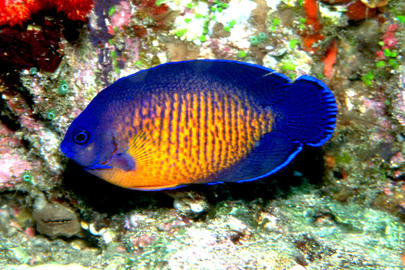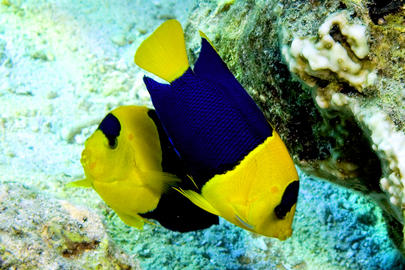Red orange under color with narrow blue bars, head and fins deep blue to purple. Two spines extend from lower gill cover.
Bright yellow head and forebody, deep blue behind with yellow tail. A blue saddle across nape extends to eyes.
Read more at: http://phys.org/news/2013-03-marine-diversity-citizen-science.html#jCp
For more information please visit www.reef.org/lionfish/derbies
For more information please visit www.reef.org/lionfish/derbies
For more information please visit www.reef.org/lionfish/derbies
For more information please visit www.reef.org/lionfish/derbies
This is a month long GAFC event presented at CocoView Resort, Roatan, Honduras for the 7th year in a row. The program will begin on Sunday and conclude Friday evening for four consecutive weeks starting June 20th and continuing daily through July 19th. CoCoView guests will enjoy several free multimedia Fish ID seminars for novices to advanced fish watchers during their stay, including one seminar on the unusual fish found in Roatan waters.
This is a REEF GAFC: Great Annual Fish Count survey dive at Tommy's / Carrying Cove. This dive site is an easy entry, low current site, great for new divers as well as those with more experience.
There will also be an ID class held at The Dive Shack prior to this dive. Stay tuned.
To register contact Loribeth Armstrong: loribeth_armstrong@rogers.com
This paper is part of the larger body of genetic research being conducted on Nassau Grouper in the Caribbean. The authors identified ten polymorphic microsatellite loci for Nassau grouper (Epinephelus striatus) by cross-amplification of loci isolated in Gulf coney (Epinephelus acanthistius). Samples from three geographic localities were scored for these loci –Glovers Reef off Belize (n = 50), Little Cayman (n = 50) and Grammanik Bank in the U.S. Virgin Islands (n = 50). Screening samples yielded 8 to 27 alleles per locus with observed levels of heterozygosity ranging from 0.30 to 0.96.


